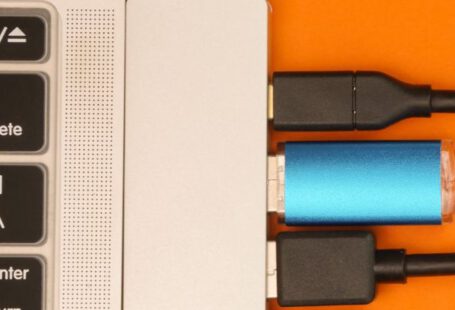In today’s ever-evolving technological landscape, innovations in computer hardware play a pivotal role in shaping the future of computing. With advancements in fields like artificial intelligence, quantum computing, and materials science, the possibilities for what computer hardware can achieve are expanding at a rapid pace. In this article, we will explore some of the key innovations that are driving the future of computer hardware.
### Quantum Computing: Unleashing Unprecedented Processing Power
One of the most exciting innovations in computer hardware is the development of quantum computing. Unlike traditional computers that use bits to process information, quantum computers utilize quantum bits or qubits. This quantum nature allows these computers to perform complex calculations at speeds that are unimaginable with classical computers.
### Artificial Intelligence: Enhancing Performance and Efficiency
Artificial intelligence (AI) is revolutionizing the capabilities of computer hardware by enabling machines to learn and adapt to new situations. Through neural networks and deep learning algorithms, AI systems can optimize hardware performance, enhance efficiency, and even develop new hardware designs.
### Neuromorphic Computing: Mimicking the Human Brain
Neuromorphic computing is a cutting-edge technology that aims to mimic the structure and function of the human brain in hardware form. By leveraging the brain’s parallel processing capabilities, neuromorphic chips can perform tasks like pattern recognition and decision-making with remarkable efficiency.
### 3D Stacked Chips: Maximizing Space and Performance
Traditional computer chips are flat and two-dimensional, limiting their processing power and efficiency. 3D stacked chips, on the other hand, stack multiple layers of circuitry on top of each other, increasing the amount of processing power that can be packed into a smaller space. This innovation is crucial for meeting the demands of high-performance computing applications.
### Silicon Photonics: Revolutionizing Data Transfer
Silicon photonics is a groundbreaking technology that uses light to transfer data within computer systems. By replacing traditional copper wires with optical interconnects, silicon photonics can significantly increase data transfer speeds while reducing energy consumption. This innovation is essential for meeting the growing demands of data-intensive applications.
### DNA Computing: Harnessing the Power of Biomolecules
DNA computing is an emerging field that explores the potential of using biomolecules like DNA to perform computational tasks. By leveraging the massive parallelism and storage capacity of DNA, researchers are exploring new ways to solve complex problems that are beyond the capabilities of traditional computers.
### Conclusion: The Future of Computer Hardware
As we look ahead to the future of computer hardware, it is clear that innovations in fields like quantum computing, artificial intelligence, and materials science are driving the next wave of technological advancements. From unlocking unprecedented processing power to revolutionizing data transfer and storage, these innovations hold the key to shaping the future of computing. By staying at the forefront of these developments, we can continue to push the boundaries of what is possible with computer hardware and pave the way for a more efficient, powerful, and connected digital world.





